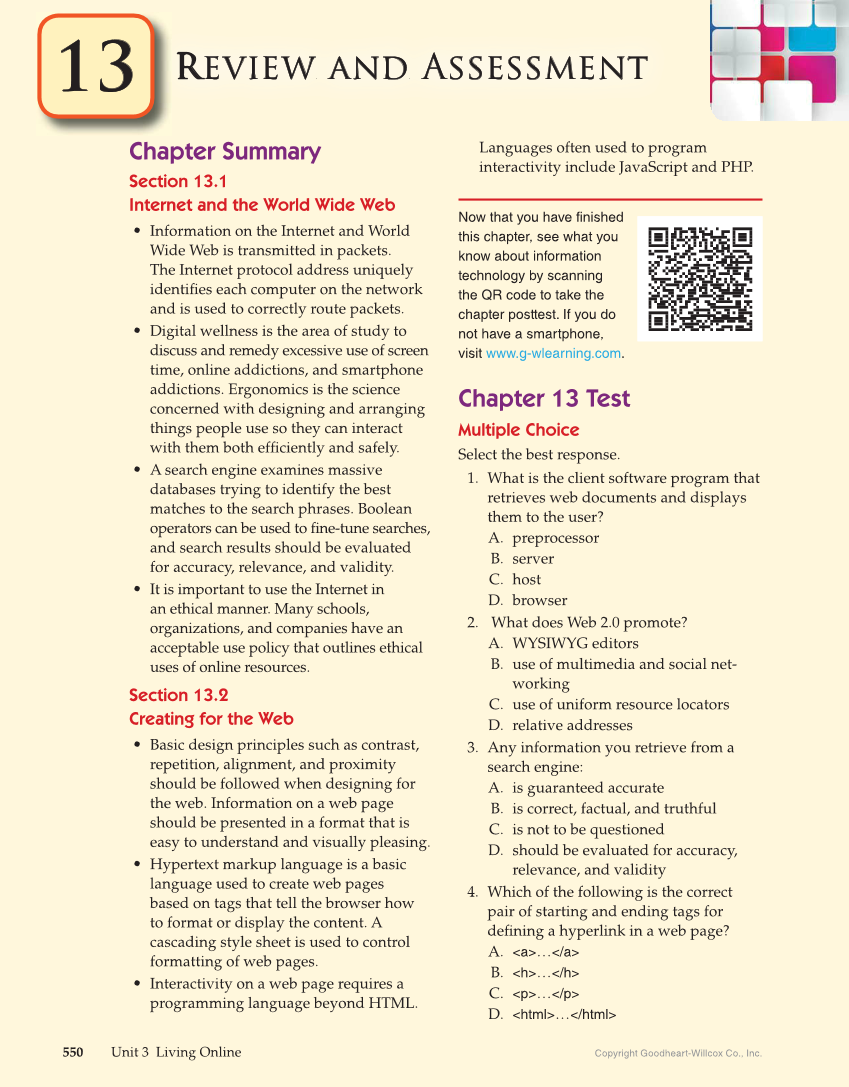Review R and Assessment 550 Unit 3 Living Online Copyright Goodheart-Willcox Co., Inc. 13 Chapter Summary Section 13.1 Internet and the World Wide Web • Information on the Internet and World Wide Web is transmitted in packets. The Internet protocol address uniquely identifi es each computer on the network and is used to correctly route packets. • Digital wellness is the area of study to discuss and remedy excessive use of screen time, online addictions, and smartphone addictions. Ergonomics is the science concerned with designing and arranging things people use so they can interact with them both effi ciently and safely. • A search engine examines massive databases trying to identify the best matches to the search phrases. Boolean operators can be used to fi ne-tune searches, and search results should be evaluated for accuracy, relevance, and validity. • It is important to use the Internet in an ethical manner. Many schools, organizations, and companies have an acceptable use policy that outlines ethical uses of online resources. Section 13.2 Creating for the Web • Basic design principles such as contrast, repetition, alignment, and proximity should be followed when designing for the web. Information on a web page should be presented in a format that is easy to understand and visually pleasing. • Hypertext markup language is a basic language used to create web pages based on tags that tell the browser how to format or display the content. A cascading style sheet is used to control formatting of web pages. • Interactivity on a web page requires a programming language beyond HTML. Languages often used to program interactivity include JavaScript and PHP. Now that you have finished this chapter, see what you know about information technology by scanning the QR code to take the chapter posttest. If you do not have a smartphone, visit www.g-wlearning.com. Chapter 13 Test Multiple Choice Select the best response. 1. What is the client software program that retrieves web documents and displays them to the user? A. preprocessor B. server C. host D. browser 2. What does Web 2.0 promote? A. WYSIWYG editors B. use of multimedia and social net- working C. use of uniform resource locators D. relative addresses 3. Any information you retrieve from a search engine: A. is guaranteed accurate B. is correct, factual, and truthful C. is not to be questioned D. should be evaluated for accuracy, relevance, and validity 4. Which of the following is the correct pair of starting and ending tags for defi ning a hyperlink in a web page? A. a…/a B. h…/h C. p…/p D. html…/html
